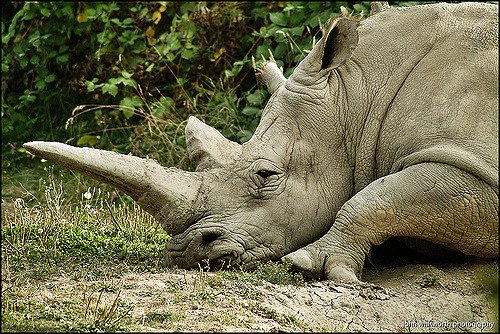Humankind has had a tremendous run. For the past 10,000 years, since the dawn of the agricultural age, the human species has dominated the animal kingdom, going from 1 to 2 percent of the world’s mammal population to 97 percent today.
As a result of this great prosperity, we are living through what scientists call the sixth extinction, one that will rival five other waves of mass extinctions over the past 600 million years that have killed off more than 95 percent of the species.
While species die off everyday– anywhere from 24 to 150 go extinct on planet earth each day according to various estimates — few caught the attention of the world as the death of the last remaining male white rhino in the world.
Why is this important to hunters? As hunters, species protection is vitally critical no matter if you’re hunting it or not. If anyone doubts this, do some reading about Teddy Roosevelt and the beginning of the Boone and Crocket Club. Every animal is important especially one as beautiful and majestic as the white rhino. Roosevelt thought so about the buffalo and so should you about the rhino.
A victim of poaching, like so many central African animals, the white rhino was targeted for its tusks because it’s said to act as an aphrodisiac when ground up and ingested. But it isn’t true one bit. Rhino horns are made of the same material as human nails. So if it’s really a love potion, then biting your nails should do the same thing.
Especially for hunters who enjoy traveling to Africa for big game hunting, species extinction is definitely a blemish on the sport in general. In March 2018, the Trump administration reversed a 2016 ban on importing elephant tusks.
The African elephant, similar to the white rhino, the African lion among others, have been decimated by hunting, in this case because of demand for ivory. Numbering up to 3 million in the past century, there are now an estimated 415,000 African elephants, according to the World Wildlife Fund.
There is hope yet for species like the white rhino, however. Just two aging female white rhinos remain and scientists hope they can artificially inseminate an embryo into a southern white rhino, which is not endangered.
The process to reproduce a white rhino requires precise genetic engineering involving invitro fertilization, stem cell science and gene editing, according to an article in The Guardian.
There is also the prospect that through genetic engineering and a fragment of skin cells, scientists will be able to bring long extinct species back to life, maybe even dinosaurs.
“Humanity has brought the northern white rhino to the edge of extinction because it has slaughtered the animal for its horn,” said project scientist Jan Stejskal, based on the Guardian report. “We have a duty to try to save it, no matter how hard that is going to be.”
Photo credit: Flickr JWPhotowerks








